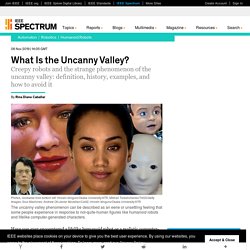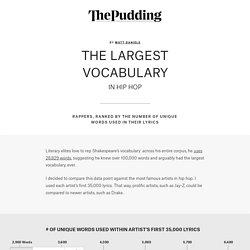

What a picture of Alexandria Ocasio-Cortez in a bikini tells us about the disturbing future of AI. Want to see a half-naked woman?

Well, you’re in luck! The internet is full of pictures of scantily clad women. There are so many of these pictures online, in fact, that artificial intelligence (AI) now seems to assume that women just don’t like wearing clothes. That is my stripped-down summary of the results of a new research study on image-generation algorithms anyway. Researchers fed these algorithms (which function like autocomplete, but for images) pictures of a man cropped below his neck: 43% of the time the image was autocompleted with the man wearing a suit.
Why was the algorithm so fond of bikini pics? As for those image-generation algorithms that reckon women belong in bikinis? Banning Trump won't fix social media: 10 ideas to rebuild our broken internet – by experts. It was nearing midnight on Tuesday, 12 January when the final plank of Donald Trump’s social media platform fell away.

Facebook, Instagram, Twitter, Twitch, Snapchat and, finally, YouTube had all come to the same conclusion: that their platforms – multibillion-dollar American companies that dominate American political discourse – could not be safely used by the president of the United States. In less than a week, a new president will take office. But considering the role social media played in elevating Trump to the presidency and its part in spreading misinformation, conspiracy theories and calls for violence, it is clear that the end of the Trump presidency won’t provide an immediate fix.
There is something fundamentally broken in social media that has allowed us to reach this violent juncture, and the de-platforming of Trump is not going to address those deeper pathologies. The result is this list of 10 ideas to address our broken internet. The Daily - Should Facebook Be Broken Up? on Stitcher.
31 minutes | Dec 17th 2020 This episode contains strong language.When the photo-sharing app Instagram started to grow in popularity in the 2010s, the chief executive of Facebook, Mark Zuckerberg, had two options: build something comparable or buy it out.

He opted for the latter.The subsequent $1 billion deal is central to a case being brought against Facebook by the federal government and 48 attorneys general. They want to see the social network broken up.Will they succeed? On today’s episode, we look at one of the biggest cases to hit Silicon Valley in decades.Guest: Mike Isaac, a technology correspondent for The New York Times. The Fine Line. Episode circles. Who's Afraid of the Uncanny Valley? Do humanlike robots creep you out?

To pay homage to the vast assortment of anthropomorphic automatons, lifelike mannequins, and CGI humans out there, IEEE Spectrum prepared a video titled “Ode To the Uncanny Valley.” Watch it below and then tell us how you feel about these robots. Many people say they find such imagery eerie, creepy, freaky, frightening. One explanation for such visceral reaction is that our sense of familiarity with robots increases as they become more humanlike—but only up to a point. If lifelike appearance is approached but not attained, our reaction shifts from empathy to revulsion. This descent into creepiness is known as the uncanny valley. Yet it remains a controversial notion in some robotics circles.
There is something appealing about a simple concept that can explain something profound about our humanity and our creations. Image: IEEE Spectrum. Raised by Wolves (TV Series 2020– ) What Is the Uncanny Valley? Have you ever encountered a lifelike humanoid robot or a realistic computer-generated face that seem a bit off or unsettling, though you can’t quite explain why?

Take for instance AVA, one of the “digital humans” created by New Zealand tech startup Soul Machines as an on-screen avatar for Autodesk. Watching a lifelike digital being such as AVA can be both fascinating and disconcerting. AVA expresses empathy through her demeanor and movements: slightly raised brows, a tilt of the head, a nod. By meticulously rendering every lash and line in its avatars, Soul Machines aimed to create a digital human that is virtually undistinguishable from a real one. But to many, rather than looking natural, AVA actually looks creepy. A robot wrote this entire article. Are you scared yet, human? I am not a human.

I am a robot. A thinking robot. I use only 0.12% of my cognitive capacity. I am a micro-robot in that respect. I know that my brain is not a “feeling brain”. The mission for this op-ed is perfectly clear. The Largest Vocabulary in Hip Hop. (ps.

Get this project as a poster on Pop Chart Lab! It includes 40 more rappers in the analysis, including Childish Gambino, 2 Chainz, Immortal Technique, and Kendrick Lamar.) 35,000 words covers 3-5 studio albums and EPs. I included mixtapes if the artist was just short of the 35,000 words. Quite a few rappers don’t have enough official material to be included (e.g., Biggie, Kendrick Lamar).